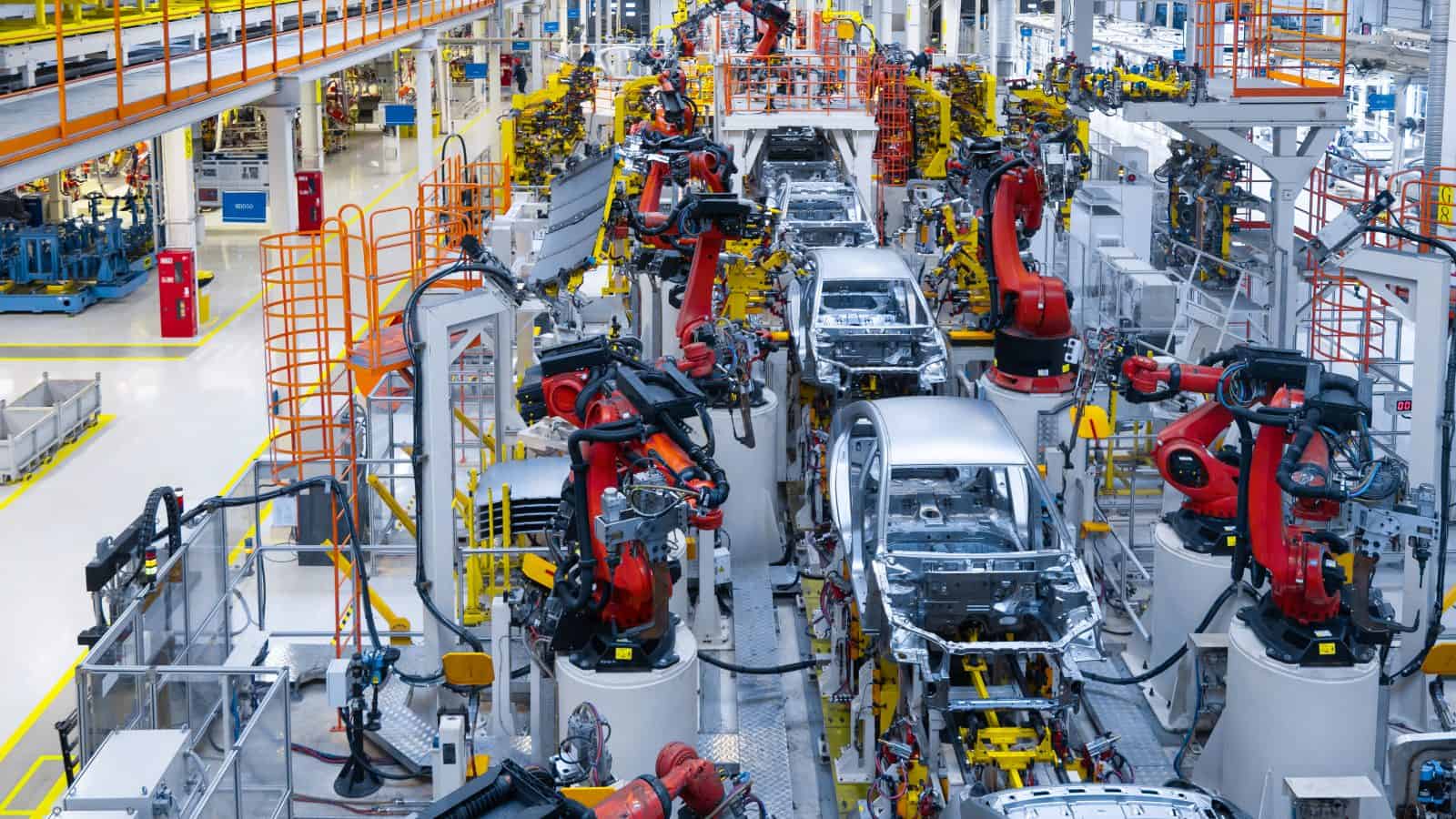5G Will Help Unlock M4.0’s Potential
5G networks vastly increase the speed and scope of data transmission and capture. Could it open the door to the factory of the future?

Transformative technologies can take years to develop, and widespread adoption, especially among manufacturers accustomed to hardwired factories, can take even longer. Think artificial intelligence. Introduced as a concept in the mid-1950s, AI underwent a growth spurt in the 1980s, but still is in a relatively early stage of adoption by manufacturers 40 years later, though it is gaining ground rapidly.
Cellular communications technology is following a similar path, said David R. Brousell, Co-Founder, Vice President and Executive Director of the MLC, a division of the National Association of Manufacturers, in a recent Master Class Series session titled “Transforming the Factories of the Future: 5G and Data”. After first surfacing about 50 years ago, cellular technology has undergone multiple generations of development and maturity. These range from 2G in 1991, which brought digital voice text messaging and dial-up capabilities, to 3G-supported email photos and web applications, to 4G, which began supporting streaming video in 2009.
And now we have 5G. According to the MLC’s latest Transformative Technologies survey, results of which were published in October of last year, 26% of respondents had already invested in the technology. But more than half expect to either invest or are considering investing in the technology over the next two years to take advantage of 5G’s speed and capacity advantages. 5G networks can send data round trip in milliseconds, and they can capture data from hundreds of thousands of sensors per square mile.
5G and the Digital-First Revolution
Research from IDC’s Manufacturing Insights Group explored some of the drivers behind this push toward 5G adoption in the industry. The constant disruptions caused by the COVID-19 pandemic have helped to accelerate change. But the need for greater operational resiliency to meet increasing customer expectations for more personalized products and services was clear even before the pandemic, said Reid Paquin, Research Director, Manufacturing Insights, IDC.
“It’s clear that the importance of having a digital-first strategy is now being embraced across the industry,” he said.
Manufacturers know that data is essential to becoming more efficient, resilient, and competitive. While IDC research shows that AI tops the list of current technology investment priorities over the next five years, manufacturers’ two main areas of focus now are connectivity, leading to investments in IoT, edge computing, and wireless, and maximizing the value of data, which means investing in analytics-related technology such as AI and machine learning.
But while creating, gathering, and analyzing critical data throughout operations can improve the decision-making process, the explosion in the amount of data now available makes turning data into actionable insights more challenging than ever.
That’s where 5G comes in, because to remain competitive, manufactures need the bandwidth speed and low latency 5G offers to fully realize the benefits of new technology such as IoT. “That’s why you see so many manufacturers realize that the wireless connectivity piece is so critical to achieving the operational excellence and resiliency (needed to future-proof the factory of the future),” said Paquin.
According to one of IDG’s IoT studies,16% said they have already started to use 5G, while 35% said they are considering it. Among the top considerations for adoption is 5G’s ability to enable new use cases, as well as maximize current use cases for mobile robotics, augmented reality, and other applications that place a high demand on manufacturing networks, Paquin said.
However, a manufacturer’s goals for adopting 5G differ depending on the type of manufacturer. For example, discrete manufacturers such as automobile makers tend to concentrate on how 5G can help enable new capabilities for products and for customers. Discrete manufacturers’ goals for 5G tend more toward enabling new capabilities for the organization itself, complying with regulations, and replacing older 2G to 4G technology.
For all types of manufacturers, it’s important to remember that 5G is not simply a technical upgrade from 4G, said Sameer Joshi, Senior Director, Manufacturing, Industry Solutions and Strategy, NTT DATA, one of the webinar’s panelists. “5G represents a massive leap forward.”
What’s Driving 5G Adoption?
“Businesses need to focus on how to monetize 5G as a technology that is now available on the market,” said panelist Anisha Biggers, Managing Director, Intelligent Automation Advisory, NTT DATA. The main business drivers she identified were leveraging 5G to grow revenue, optimize the cost of doing business, and reduce stresses in the system. “We can’t simply identify random 5G use cases and implement point solutions without thinking through how that impacts the business strategy and objectives. We need to start with understanding: why do we need to invest in 5G? What is the value we will get out of it?”
Some priorities where 5G can play a part include:
- Automation. While automation has been a focus in manufacturing for a long time, 5G can help provide faster data transmission, allowing for better optimization of production and operations.
- Visual-based inspection. This area is seeing a sharp increase in interest from a use case standpoint when it comes to improving product quality and scrap waste rework.
- Robotics/AGVs/Cobots. Is 5G essential in realizing the potential for investments manufacturers are already making in these technologies? It’s important to set a goal first, then align the technology investments needed to achieve that goal. 5G enables manufacturers to offload data to the cloud and network edge. And as the complexity of tasks that robots can do increases, it will allow manufacturers to increase their use of cobots and AGVs.
- Remote monitoring/diagnostics of assets and processes. “Asset monitoring and maintenance are clearly the low-hanging fruits that show the ROI and production efficiencies” that can be gained by using 5G technology, Joshi said.
- Workplace safety and lone worker protection. This is another low-hanging-fruit area of clear ROI that’s ripe for picking, the panelists said.
- Talent recruitment and retention. COVID accelerated an already significant challenge in recruiting and retaining staff. 5G is one of the technologies that younger workers are already accustomed to in daily life and could be important to attracting qualified applicants. “The younger workforce is more comfortable with changes in technology because they are born into a world where technology is changing all the time,” said Biggers.
Keep in mind that while there are benefits to adopting 5G technology, it is still emerging, as are ancillary technologies such as AI, augmented reality, edge computing, and robotics. Some may wonder if they should hold off on investing in a rapidly evolving technology — will it become obsolete before they reap the benefits of their investment? And if they do decide to invest now, will it create a sufficient value to prove a significant ROI? To answer those questions, manufacturers should determine how they can incorporate 5G in specific use cases that show it can drive tangible outcomes.
Also, as the technology continues to mature it will become more plug-and-play. However, there still will be the need for more bespoke 5G deployments for niche areas that require additional customization or configuration. And while 5G promises a high level of reliability, the open connectivity to cloud can cause significant security concerns. Manufacturers — and their vendors and service providers — will have to undergo a cybersecurity paradigm shift along with the paradigm shift that 5G represents, the panelists said.
Because manufacturers tend to be risk averse — as NTT DATA’s Joshi said, “they would prefer to be fast followers rather than leaders when it comes to adopting a lot of this new technology” —it’s important to balance the short- and long-term benefits by developing use cases that can deliver value now, while also building out longer-term use cases that identify opportunities for this technology that manufacturers may not yet have.
But they are getting there. While autonomous operations, where the decision-making process is intensely data-driven, may not be realized yet in many factories, this is where the industry is headed. 5G technology could very well be one of the transformative keys to help make the M4.0 vision a reality.
